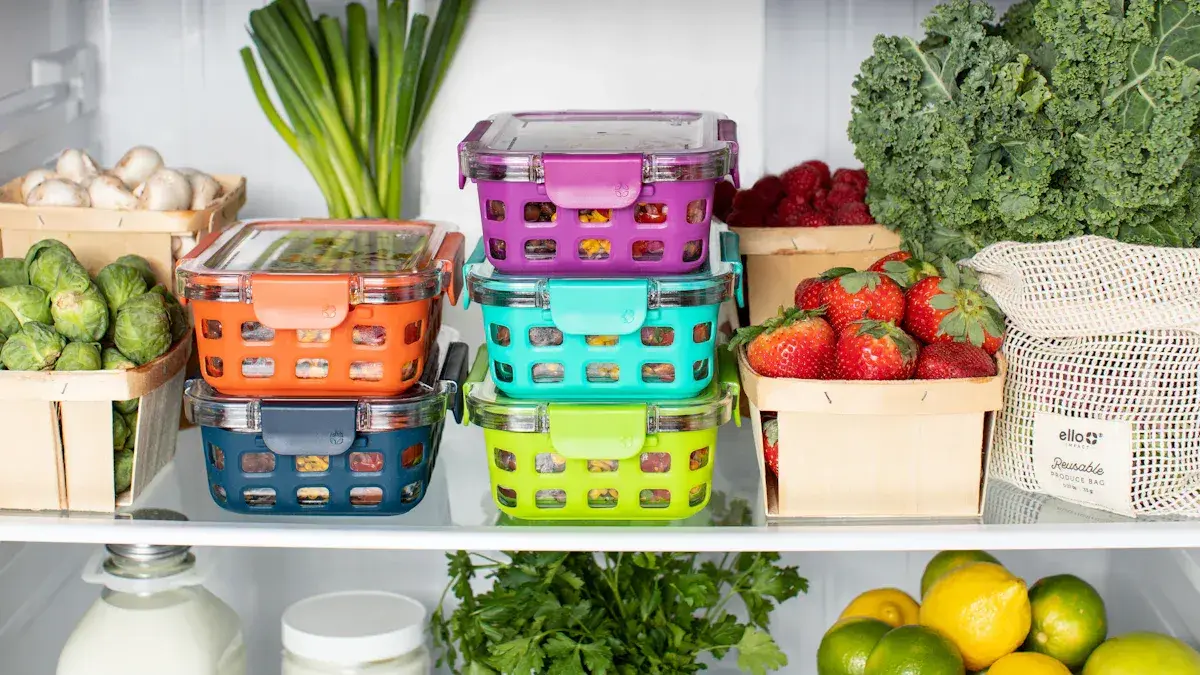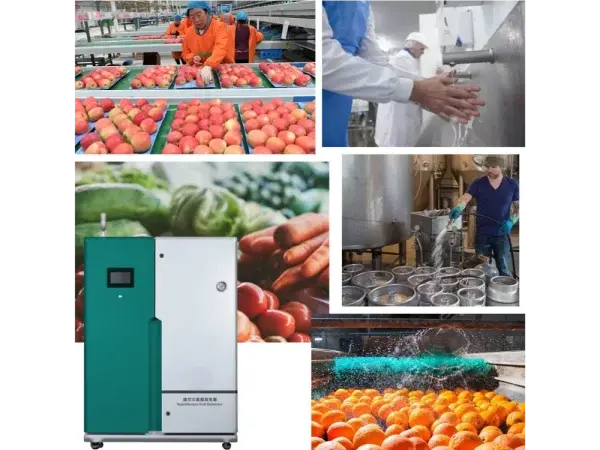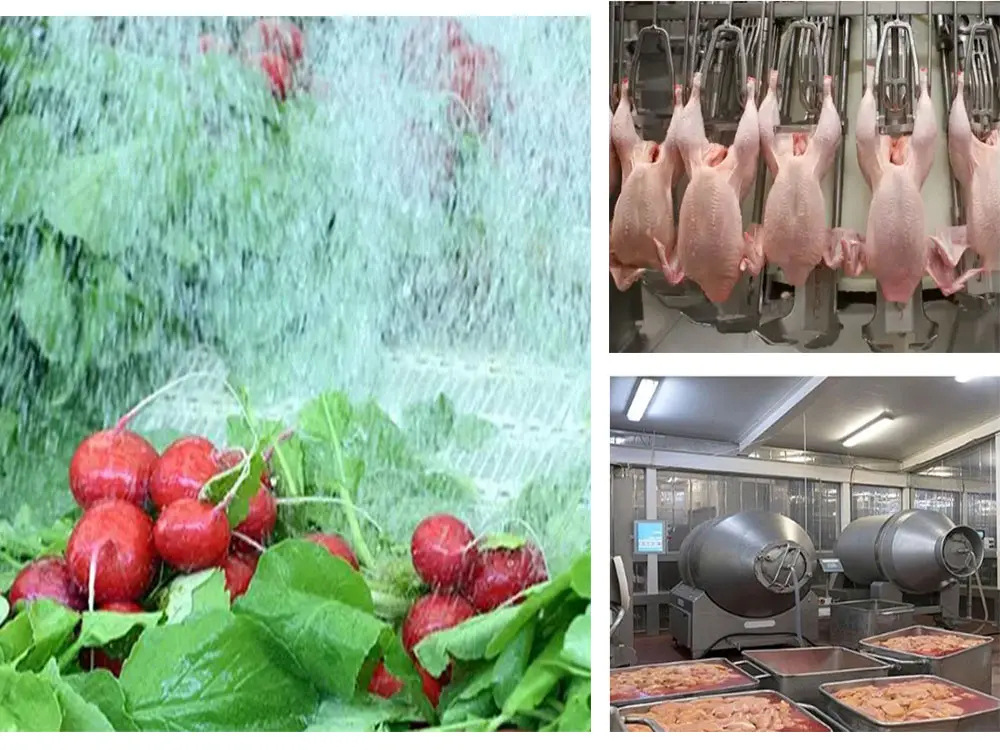During the long journey of fruits and vegetables from the field to the dining table, the post-harvest preservation stage is the key to determining their quality and shelf life.
Traditional preservation methods such as chemical preservatives and low-temperature refrigeration, although they have certain effects,
have problems such as chemical residues and high energy consumption. Hypochlorous acid, as a new type of green preservative,
is gradually becoming the new favorite in the field of fruit and vegetable preservation due to its advantages such as high efficiency, safety and environmental friendliness

The scientific principle of hypochlorous acid preservation
Hypochlorous acid (HOCL) is a weakly acidic and oxidizing substance. Its molecules are small and uncharged, and can easily penetrate the cell membranes of microorganisms.
After entering the interior of cells, hypochlorous acid will undergo oxidation reactions with biological macromolecules such as proteins and enzymes within the cells,
destroying the physiological structure and function of microorganisms and rendering them inactive, thereby achieving the purpose of sterilization and disinfection.
In addition, hypochlorous acid can effectively inhibit the growth of mold and the reproduction of bacteria on the surface of fruits and vegetables,
reducing the spoilage and deterioration caused by microbial contamination, and ensuring the preservation of fruits and vegetables
The unique advantages of hypochlorous acid in the preservation of fruits and vegetables
1,Highly efficient sterilization, extending the shelf life
Hypochlorous acid has broad-spectrum bactericidal properties and has a significant killing effect on common pathogenic bacteria in fruits and vegetables such as Escherichia coli,
Staphylococcus aureus, and mold. Studies have shown that after treating fruits and vegetables with an appropriate concentration of hypochlorous acid,
the number of microorganisms on the surface of fruits and vegetables can be reduced by more than 90%,
effectively slowing down the spoilage rate of fruits and vegetables and extending their freshness period. Take strawberries as an example.
After being treated with hypochlorous acid, the preservation time at room temperature can be extended from 2-3 days to 5-7 days.
Under refrigeration conditions, the preservation period can be further extended to 2-3 weeks, allowing consumers to enjoy the sweetness of fresh strawberries for a longer time
2,Hypochlorous acid is safe and non-toxic, with no chemical residues
Unlike traditional chemical preservatives, hypochlorous acid gradually decomposes into water and oxygen after completing its sterilization and preservation tasks,
without leaving any harmful substances on the surface of fruits and vegetables. This ensures that fruits and vegetables treated with hypochlorous acid fully meet food safety standards.
Consumers need not worry about the potential threat to health posed by chemical residues. For special groups such as pregnant women and children,
It is more reassuring to consume fruits and vegetables preserved with hypochlorous acid. Besides,
hypochlorous acid can also be used for environmental disinfection in food processing workshops to ensure the safety and hygiene of the entire production environment
3,Hypochlorous acid is environmentally friendly and pollution-free
Hypochlorous acid is mild and does no harm to fruits and vegetables. The main raw materials for preparing hypochlorous acid are water, salt and electricity.
The production process does not generate harmful waste and is environmentally friendly. In the current era of advocating green development,
the use of hypochlorous acid for the preservation of fruits and vegetables not only conforms to the concept of sustainable development
but also reduces the pollution caused by traditional preservation methods to the environment, contributing to the creation of a green and ecological food industry chain
4,Hypochlorous acid is mild and does no harm to fruits and vegetables
Hypochlorous acid is a weak acid. At an appropriate concentration, it will not have a significant impact on the appearance,
color, taste and nutritional components of fruits and vegetables. On the contrary, it can maintain the freshness and quality of fruits and vegetables to a certain extent,
keep their hardness, greenness and flavor, and allow consumers to taste the delicious fruits and vegetables that are almost the same as when they were just picked.

Application methods of hypochlorous acid in the preservation of fruits and vegetables
1,Soaking treatment
Soak the picked fruits and vegetables in hypochlorous acid solution for 5 to 10 minutes. The concentration of hypochlorous acid
needs to be adjuste according to the type and maturity of fruits and vegetables. Generally, it is recommend that the concentration be between 50 and 200PPM.
During the soaking process, hypochlorous acid can fully contact the surface of fruits and vegetables, effectively killing microorganisms. After soaking,
wash them clean with clean water and they can be store in subsequent packaging boxes. This method is applicable to most fruits and vegetables such as leafy vegetables and root vegetables
2,Spray treatment
Spray hypochlorous acid evenly on the surface of fruits and vegetables using a spray device. This method is simple to
operate and is especially suitable for fruits and vegetables with large surface areas or those that are difficult to soak, such as watermelons,
Hami melons, and grapes. The spray treatment can quickly form a layer of antibacterial protective film on the surface of fruits and vegetables,
playing a role in preservation. When spraying, it is necessary to ensure that the hypochlorous acid is evenly cover to guarantee the preservation effect
3,Fumigation treatment
For some fruits and vegetables that are sensitive to humidity, such as nuts and dried goods, hypochlorous acid fumigation can be use for preservation.
Heat and evaporate the hypochlorous acid solution to form gas, and then fumigate the fruits and vegetables in a closed environment.
The fumigation time and temperature need to be adjuste according to the actual situation. Generally, the fumigation time is 30 to 60 minutes,
and the temperature is controlle at 30 to 40 degrees Celsius. Through fumigation, hypochlorous acid gas can penetrate into the interior of fruits and vegetables,
inhibit the growth of microorganisms, and at the same time prevent spoilage caused by excessive moisture.

FAQ
1,May I ask if your delivery cycle is long?
Under normal circumstances, the delivery time for our regular models is 3 to 5 days after debugging is complete. If the equipment is custom-made,
the production cycle is 7 to 15 days after debugging and delivery.
2,How is the product quality of your hypochlorous acid generator?
Our hypochlorous acid generators have been sold to over 30 countries around the world and have received many favorable comments. Some have established long-term partners
